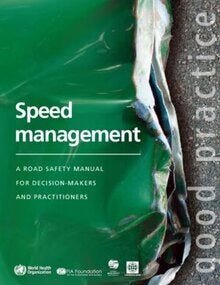Speed management. A road safety manual for decision-makers and practitioners

|
OverviewExcessive and inappropriate speed is the most important factor contributing to the road injury problem faced by many countries. The higher the speed the greater the stopping distance required, and hence the increased risk of a crash. As more kinetic energy must be absorbed during a high-speed impact, there is a higher risk of injury should a crash occur. Speed management is a very important tool for improving road safety. However, improving compliance with speed limits and reducing unsafe driving speeds are not easy tasks. Many drivers do not recognize the risks involved and often the perceived benefits of speeding outweigh the perceived problems that can result. The management of speed remains one of the biggest challenges facing road safety practitioners around the world and calls for a concerted, long-term, multidisciplinary response. This manual advocates a strong and strategic approach to creating a safe road system, with speed management at its heart. Reducing motor vehicle speeds in areas where the road user mix includes a high volume of vulnerable road users such as pedestrians and cyclists is especially important. |
